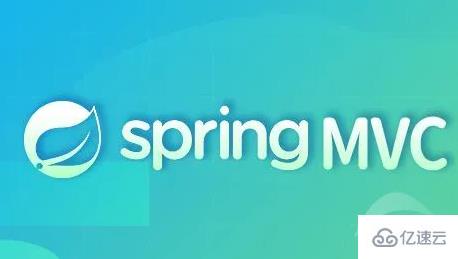您好,登錄后才能下訂單哦!
您好,登錄后才能下訂單哦!
今天小編給大家分享一下Spring MVC的原理是什么的相關知識點,內容詳細,邏輯清晰,相信大部分人都還太了解這方面的知識,所以分享這篇文章給大家參考一下,希望大家閱讀完這篇文章后有所收獲,下面我們一起來了解一下吧。
SpringMVC是一種基于Spring實現了Web MVC設計模式的請求驅動類型的輕量級Web框架,使用了MVC的架構模式思想,將Web層進行指責解耦,并管理應用所需的生命周期,為簡化日常開發,提供了很大便利。

在上一篇文章中,我向大家介紹了 Spring MVC 是如何處理 HTTP 請求的。Spring MVC 可對外提供服務時,說明其已經處于了就緒狀態。再次之前,Spring MVC 需要進行一系列的初始化操作。正所謂兵馬未動,糧草先行。這些操作包括創建容器,加載 DispatcherServlet 中用到的各種組件等。本篇文章就來和大家討論一下這些初始化操作中的容器創建操作,容器的創建是其他一些初始化過程的基礎。那其他的就不多說了,我們直入主題吧。
一般情況下,我們會在一個 Web 應用中配置兩個容器。一個容器用于加載 Web 層的類,比如我們的接口 Controller、HandlerMapping、ViewResolver 等。在本文中,我們把這個容器叫做 web 容器。另一個容器用于加載業務邏輯相關的類,比如 service、dao 層的一些類。在本文中,我們把這個容器叫做業務容器。在容器初始化的過程中,業務容器會先于 web 容器進行初始化。web 容器初始化時,會將業務容器作為父容器。這樣做的原因是,web 容器中的一些 bean 會依賴于業務容器中的 bean。比如我們的 controller 層接口通常會依賴 service 層的業務邏輯類。
下面舉個例子進行說明:
我們將 dao 層的類配置在 application-dao.xml 文件中,將 service 層的類配置在 application-service.xml 文件中。然后我們將這兩個配置文件通過 標簽導入到 application.xml 文件中。此時,我們可以讓業務容器去加載 application.xml 配置文件即可。另一方面,我們將 Web 相關的配置放在 application-web.xml 文件中,并將該文件交給 Web 容器去加載。
這里我們把配置文件進行分層,結構上看起來清晰了很多,也便于維護。這個其實和代碼分層是一個道理,如果我們把所有的代碼都放在同一個包下,那看起來會多難受啊。同理,我們用業務容器和 Web 容器去加載不同的類也是一種分層的體現吧。當然,如果應用比較簡單,僅用 Web 容器去加載所有的類也不是不可以。
前面說了一些背景知識作為鋪墊,那下面我們開始分析容器的創建過程吧。按照創建順序,我們先來分析業務容器的創建過程。業務容器的創建入口是 ContextLoaderListener 的 contextInitialized 方法。顧名思義,ContextLoaderListener 是用來監聽 ServletContext 加載事件的。當 ServletContext 被加載后,監聽器的 contextInitialized 方法就會被 Servlet 容器調用。ContextLoaderListener Spring 框架提供的,它的配置方法如下:
org.springframework.web.context.ContextLoaderListener contextConfigLocationclasspath:application.xml
如上,ContextLoaderListener 可通過 ServletContext 獲取到 contextConfigLocation 配置。這樣,業務容器就可以加載 application.xml 配置文件了。那下面我們來分析一下 ContextLoaderListener 的源碼吧。
public class ContextLoaderListener extends ContextLoader implements ServletContextListener {
// 省略部分代碼
@Override
public void contextInitialized(ServletContextEvent event) {
// 初始化 WebApplicationContext
initWebApplicationContext(event.getServletContext());
}
}
public WebApplicationContext initWebApplicationContext(ServletContext servletContext) {
/*
* 如果 ServletContext 中 ROOT_WEB_APPLICATION_CONTEXT_ATTRIBUTE 屬性值
* 不為空時,表明有其他監聽器設置了這個屬性。Spring 認為不能替換掉別的監聽器設置
* 的屬性值,所以這里拋出異常。
*/if (servletContext.getAttribute(WebApplicationContext.ROOT_WEB_APPLICATION_CONTEXT_ATTRIBUTE) != null) {
throw new IllegalStateException("Cannot initialize context because there is already a root application context present - " +"check whether you have multiple ContextLoader* definitions in your web.xml!");
}
Log logger = LogFactory.getLog(ContextLoader.class);
servletContext.log("Initializing Spring root WebApplicationContext");if (logger.isInfoEnabled()) {...}
long startTime = System.currentTimeMillis();
try {if (this.context == null) {
// 創建 WebApplicationContext
this.context = createWebApplicationContext(servletContext);
}if (this.context instanceof ConfigurableWebApplicationContext) {
ConfigurableWebApplicationContext cwac = (ConfigurableWebApplicationContext) this.context;if (!cwac.isActive()) {if (cwac.getParent() == null) {
/*
* 加載父 ApplicationContext,一般情況下,業務容器不會有父容器,
* 除非進行配置
*/
ApplicationContext parent = loadParentContext(servletContext);
cwac.setParent(parent);
}
// 配置并刷新 WebApplicationContext
configureAndRefreshWebApplicationContext(cwac, servletContext);
}
}
// 設置 ApplicationContext 到 servletContext 中
servletContext.setAttribute(WebApplicationContext.ROOT_WEB_APPLICATION_CONTEXT_ATTRIBUTE, this.context);
ClassLoader ccl = Thread.currentThread().getContextClassLoader();if (ccl == ContextLoader.class.getClassLoader()) {
currentContext = this.context;
}else if (ccl != null) {
currentContextPerThread.put(ccl, this.context);
}if (logger.isDebugEnabled()) {...}if (logger.isInfoEnabled()) {...}return this.context;
}
catch (RuntimeException ex) {
logger.error("Context initialization failed", ex);
servletContext.setAttribute(WebApplicationContext.ROOT_WEB_APPLICATION_CONTEXT_ATTRIBUTE, ex);
throw ex;
}
catch (Error err) {
logger.error("Context initialization failed", err);
servletContext.setAttribute(WebApplicationContext.ROOT_WEB_APPLICATION_CONTEXT_ATTRIBUTE, err);
throw err;
}
}如上,我們看一下上面的創建過程。首先 Spring 會檢測 ServletContext 中 ROOT_WEB_APPLICATION_CONTEXT_ATTRIBUTE 屬性有沒有被設置,若被設置過,則拋出異常。若未設置,則調用 createWebApplicationContext 方法創建容器。創建好后,再調用 configureAndRefreshWebApplicationContext 方法配置并刷新容器。最后,調用 setAttribute 方法將容器設置到 ServletContext 中。經過以上幾步,整個創建流程就結束了。流程并不復雜,可簡單總結為創建容器 → 配置并刷新容器 → 設置容器到 ServletContext 中。這三步流程中,最后一步就不進行分析,接下來分析一下第一步和第二步流程對應的源碼。如下:
protected WebApplicationContext createWebApplicationContext(ServletContext sc) {
// 判斷創建什么類型的容器,默認類型為 XmlWebApplicationContext
Class> contextClass = determineContextClass(sc);if (!ConfigurableWebApplicationContext.class.isAssignableFrom(contextClass)) {
throw new ApplicationContextException("Custom context class [" + contextClass.getName() +"] is not of type [" + ConfigurableWebApplicationContext.class.getName() + "]");
}
// 通過反射創建容器return (ConfigurableWebApplicationContext) BeanUtils.instantiateClass(contextClass);
}
protected Class> determineContextClass(ServletContext servletContext) {
/*
* 讀取用戶自定義配置,比如:
*
* contextClass * XXXConfigWebApplicationContext *
*/
String contextClassName = servletContext.getInitParameter(CONTEXT_CLASS_PARAM);if (contextClassName != null) {
try {return ClassUtils.forName(contextClassName, ClassUtils.getDefaultClassLoader());
}
catch (ClassNotFoundException ex) {
throw new ApplicationContextException("Failed to load custom context class [" + contextClassName + "]", ex);
}
}else {
/*
* 若無自定義配置,則獲取默認的容器類型,默認類型為 XmlWebApplicationContext。
* defaultStrategies 讀取的配置文件為 ContextLoader.properties,
* 該配置文件內容如下:
* org.springframework.web.context.WebApplicationContext =
* org.springframework.web.context.support.XmlWebApplicationContext
*/
contextClassName = defaultStrategies.getProperty(WebApplicationContext.class.getName());
try {return ClassUtils.forName(contextClassName, ContextLoader.class.getClassLoader());
}
catch (ClassNotFoundException ex) {
throw new ApplicationContextException("Failed to load default context class [" + contextClassName + "]", ex);
}
}
}簡單說一下 createWebApplicationContext 方法的流程,該方法首先會調用 determineContextClass 判斷創建什么類型的容器,默認為 XmlWebApplicationContext。然后調用 instantiateClass 方法通過反射的方式創建容器實例。instantiateClass 方法就不跟進去分析了,大家可以自己去看看,比較簡單。
繼續往下分析,接下來分析一下 configureAndRefreshWebApplicationContext 方法的源碼。如下:
protected void configureAndRefreshWebApplicationContext(ConfigurableWebApplicationContext wac, ServletContext sc) {if (ObjectUtils.identityToString(wac).equals(wac.getId())) {
// 從 ServletContext 中獲取用戶配置的 contextId 屬性
String idParam = sc.getInitParameter(CONTEXT_ID_PARAM);if (idParam != null) {
// 設置容器 id
wac.setId(idParam);
}else {
// 用戶未配置 contextId,則設置一個默認的容器 id
wac.setId(ConfigurableWebApplicationContext.APPLICATION_CONTEXT_ID_PREFIX +
ObjectUtils.getDisplayString(sc.getContextPath()));
}
}
wac.setServletContext(sc);
// 獲取 contextConfigLocation 配置
String configLocationParam = sc.getInitParameter(CONFIG_LOCATION_PARAM);if (configLocationParam != null) {
wac.setConfigLocation(configLocationParam);
}
ConfigurableEnvironment env = wac.getEnvironment();if (env instanceof ConfigurableWebEnvironment) {
((ConfigurableWebEnvironment) env).initPropertySources(sc, null);
}
customizeContext(sc, wac);
// 刷新容器
wac.refresh();
}上面的源碼不是很長,邏輯不是很復雜。下面簡單總結 configureAndRefreshWebApplicationContext 方法主要做了事情,如下:
設置容器 id 獲取 contextConfigLocation 配置,并設置到容器中 刷新容器 到此,關于業務容器的創建過程就分析完了,下面我們繼續分析 Web 容器的創建過程。
前面說了業務容器的創建過程,業務容器是通過 ContextLoaderListener。那 Web 容器是通過什么創建的呢?答案是通過 DispatcherServlet。我在上一篇文章介紹 HttpServletBean 抽象類時,說過該類覆寫了父類 HttpServlet 中的 init 方法。這個方法就是創建 Web 容器的入口,那下面我們就從這個方法入手。如下:
// -☆- org.springframework.web.servlet.HttpServletBean
public final void init() throws ServletException {if (logger.isDebugEnabled()) {...}
// 獲取 ServletConfig 中的配置信息
PropertyValues pvs = new ServletConfigPropertyValues(getServletConfig(), this.requiredProperties);if (!pvs.isEmpty()) {
try {
/*
* 為當前對象(比如 DispatcherServlet 對象)創建一個 BeanWrapper,
* 方便讀/寫對象屬性。
*/
BeanWrapper bw = PropertyAccessorFactory.forBeanPropertyAccess(this);
ResourceLoader resourceLoader = new ServletContextResourceLoader(getServletContext());
bw.registerCustomEditor(Resource.class, new ResourceEditor(resourceLoader, getEnvironment()));
initBeanWrapper(bw);
// 設置配置信息到目標對象中
bw.setPropertyValues(pvs, true);
}
catch (BeansException ex) {if (logger.isErrorEnabled()) {...}
throw ex;
}
}
// 進行后續的初始化
initServletBean();if (logger.isDebugEnabled()) {...}
}
protected void initServletBean() throws ServletException {
}上面的源碼主要做的事情是將 ServletConfig 中的配置信息設置到 HttpServletBean 的子類對象中(比如 DispatcherServlet),我們并未從上面的源碼中發現創建容器的痕跡。不過如果大家注意看源碼的話,會發現 initServletBean 這個方法稍顯奇怪,是個空方法。這個方法的訪問級別為 protected,子類可進行覆蓋。HttpServletBean 子類 FrameworkServlet 覆寫了這個方法,下面我們到 FrameworkServlet 中探索一番。
// -☆- org.springframework.web.servlet.FrameworkServlet
protected final void initServletBean() throws ServletException {
getServletContext().log("Initializing Spring FrameworkServlet '" + getServletName() + "'");if (this.logger.isInfoEnabled()) {...}
long startTime = System.currentTimeMillis();
try {
// 初始化容器
this.webApplicationContext = initWebApplicationContext();
initFrameworkServlet();
}
catch (ServletException ex) {
this.logger.error("Context initialization failed", ex);
throw ex;
}
catch (RuntimeException ex) {
this.logger.error("Context initialization failed", ex);
throw ex;
}if (this.logger.isInfoEnabled()) {...}
}
protected WebApplicationContext initWebApplicationContext() {
// 從 ServletContext 中獲取容器,也就是 ContextLoaderListener 創建的容器
WebApplicationContext rootContext =
WebApplicationContextUtils.getWebApplicationContext(getServletContext());
WebApplicationContext wac = null;
/*
* 若下面的條件成立,則需要從外部設置 webApplicationContext。有兩個途徑可以設置
* webApplicationContext,以 DispatcherServlet 為例:
* 1. 通過 DispatcherServlet 有參構造方法傳入 WebApplicationContext 對象
* 2. 將 DispatcherServlet 配置到其他容器中,由其他容器通過
* setApplicationContext 方法進行設置
*
* 途徑1 可參考 AbstractDispatcherServletInitializer 中的
* registerDispatcherServlet 方法源碼。一般情況下,代碼執行到此處,
* this.webApplicationContext 為 null,大家可自行調試進行驗證。
*/if (this.webApplicationContext != null) {
wac = this.webApplicationContext;if (wac instanceof ConfigurableWebApplicationContext) {
ConfigurableWebApplicationContext cwac = (ConfigurableWebApplicationContext) wac;if (!cwac.isActive()) {if (cwac.getParent() == null) {
// 設置 rootContext 為父容器
cwac.setParent(rootContext);
}
// 配置并刷新容器
configureAndRefreshWebApplicationContext(cwac);
}
}
}if (wac == null) {
// 嘗試從 ServletContext 中獲取容器
wac = findWebApplicationContext();
}if (wac == null) {
// 創建容器,并將 rootContext 作為父容器
wac = createWebApplicationContext(rootContext);
}if (!this.refreshEventReceived) {
onRefresh(wac);
}if (this.publishContext) {
String attrName = getServletContextAttributeName();
// 將創建好的容器設置到 ServletContext 中
getServletContext().setAttribute(attrName, wac);if (this.logger.isDebugEnabled()) {...}
}return wac;
}
protected WebApplicationContext createWebApplicationContext(ApplicationContext parent) {
// 獲取容器類型,默認為 XmlWebApplicationContext.class
Class> contextClass = getContextClass();if (this.logger.isDebugEnabled()) {...}if (!ConfigurableWebApplicationContext.class.isAssignableFrom(contextClass)) {
throw new ApplicationContextException("Fatal initialization error in servlet with name '" + getServletName() +"': custom WebApplicationContext class [" + contextClass.getName() +"] is not of type ConfigurableWebApplicationContext");
}
// 通過反射實例化容器
ConfigurableWebApplicationContext wac =
(ConfigurableWebApplicationContext) BeanUtils.instantiateClass(contextClass);
wac.setEnvironment(getEnvironment());
wac.setParent(parent);
wac.setConfigLocation(getContextConfigLocation());
// 配置并刷新容器
configureAndRefreshWebApplicationContext(wac);return wac;
}
protected void configureAndRefreshWebApplicationContext(ConfigurableWebApplicationContext wac) {if (ObjectUtils.identityToString(wac).equals(wac.getId())) {
// 設置容器 idif (this.contextId != null) {
wac.setId(this.contextId);
}else {
// 生成默認 id
wac.setId(ConfigurableWebApplicationContext.APPLICATION_CONTEXT_ID_PREFIX +
ObjectUtils.getDisplayString(getServletContext().getContextPath()) + '/' + getServletName());
}
}
wac.setServletContext(getServletContext());
wac.setServletConfig(getServletConfig());
wac.setNamespace(getNamespace());
wac.addApplicationListener(new SourceFilteringListener(wac, new ContextRefreshListener()));
ConfigurableEnvironment env = wac.getEnvironment();if (env instanceof ConfigurableWebEnvironment) {
((ConfigurableWebEnvironment) env).initPropertySources(getServletContext(), getServletConfig());
}
// 后置處理,子類可以覆蓋進行一些自定義操作。在 Spring MVC 未使用到,是個空方法。
postProcessWebApplicationContext(wac);
applyInitializers(wac);
// 刷新容器
wac.refresh();
}以上就是創建 Web 容器的源碼,下面總結一下該容器創建的過程。如下:
從 ServletContext 中獲取 ContextLoaderListener 創建的容器 若 this.webApplicationContext != null 條件成立,僅設置父容器和刷新容器即可 嘗試從 ServletContext 中獲取容器,若容器不為空,則無需執行步驟4 創建容器,并將 rootContext 作為父容器 設置容器到 ServletContext 中 到這里,關于 Web 容器的創建過程就講完了。總的來說,Web 容器的創建過程和業務容器的創建過程大致相同,但是差異也是有的,不能忽略。
以上就是“Spring MVC的原理是什么”這篇文章的所有內容,感謝各位的閱讀!相信大家閱讀完這篇文章都有很大的收獲,小編每天都會為大家更新不同的知識,如果還想學習更多的知識,請關注億速云行業資訊頻道。
免責聲明:本站發布的內容(圖片、視頻和文字)以原創、轉載和分享為主,文章觀點不代表本網站立場,如果涉及侵權請聯系站長郵箱:is@yisu.com進行舉報,并提供相關證據,一經查實,將立刻刪除涉嫌侵權內容。